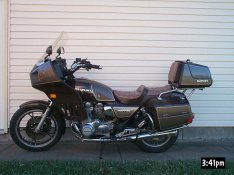Hello,
I'm a brand new Concours owner and have just been reading through the maintenance schedule. A few of the recommended replacement intervals are very surprising to me and I'm curious how diligently more experienced owners follow this schedule?
(For context, I have owned Harley Davidsons my whole riding career so the maintenance of these bikes is my frame of reference).
The following replacement intervals seem like they were designed by lawyers or people who own dealerships, and not engineers:
- Replace fuel hoses every 4 years
- Replace radiator hoses every 3 years
- Replace brake hoses and lines every 4 years
- Rebuild brake / clutch master and slave cylinders every 4 years
Are you guys really doing this?
I'm a brand new Concours owner and have just been reading through the maintenance schedule. A few of the recommended replacement intervals are very surprising to me and I'm curious how diligently more experienced owners follow this schedule?
(For context, I have owned Harley Davidsons my whole riding career so the maintenance of these bikes is my frame of reference).
The following replacement intervals seem like they were designed by lawyers or people who own dealerships, and not engineers:
- Replace fuel hoses every 4 years
- Replace radiator hoses every 3 years
- Replace brake hoses and lines every 4 years
- Rebuild brake / clutch master and slave cylinders every 4 years
Are you guys really doing this?



